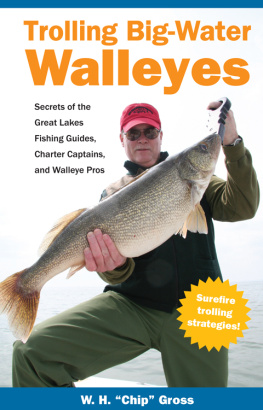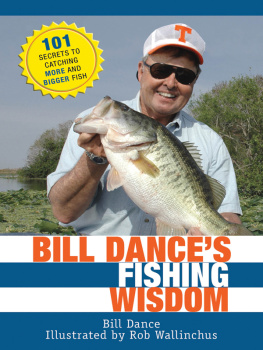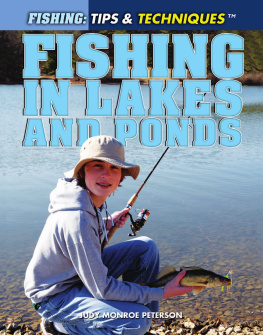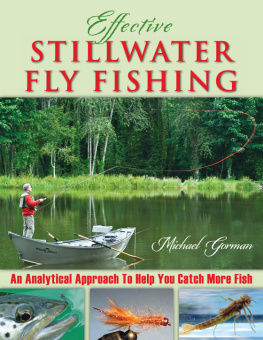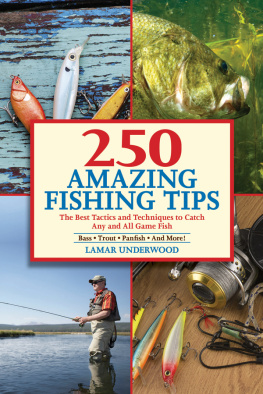W. H. Chip Gross
Frisky, industrious black squirrels are a familiar sight on the Kent State University campus and the inspiration for Black Squirrel Books, a trade imprint of The Kent State University Press.
www.KentStateUniversityPress.com
Every effort has been made to obtain permission from individuals whose likenesses appear in photographs and from persons interviewed by the author who are quoted in this book.
Cataloging information for this title is available at the Library of Congress.
Ive had the same fishing buddy for more than fifty years: Dave Hoy. Pictured on the cover of this book, hes the one without gills. May we have many more years on the water together, Brother. Now, if you could just learn how to properly net a walleye.
They dont have the fighting abilities of bass, nor do they possess the aerial acrobatics of trout. Theyre not even a particularly attractive fish, colored mainly a muted, brownish, yellow-gold. So what is the attraction of walleyes to anglers? Why do sport fishermen across North America spend millions of hours and millions of dollars annually pursuing this overgrown member of the freshwater perch family? In a word: elusiveness.
Walleyes are finicky, will-o-the-wisp fish, often here today and gone tomorrow. In the Great Lakes; sprawling Western reservoirs; and large, North American rivers, they follow schools of baitfish like hungry wolf packs. As the bait moves, they move. How this often translates for anglers is spectacular fishing one day and scarcely a bite or possibly none at all the next.
Similarly, a cold-weather front may move in and completely turn off a walleyes desire to feed. One of the most frustrating times youll ever experience as a walleye fisherman is seeing your boats sonar screen filled top to bottom with inverted hookssonar echoes of fish you strongly suspect are walleyesbut being unable to get the fish to bite no matter what techniques you try.
Yet thats what makes catching walleyes so rewarding when you do succeed. When the complex puzzle that lets you piece together a limit catch is finally solved, the feeling can be euphoric and last for days. But during those days of mentally patting yourself on the back, dont be lulled into thinking the fishing will be the same the next time youre on the wateras it likely wont. Every day on the water is different, and even though you may go to the exact same location and do the exact same things you did the time before, the fish may or may not still be there. And even if they are, they may not bite. Like I said, elusiveness.
Professional walleye tournament angler Mark Martin of Twin Lake, Michigan, likely described walleyes and walleye fishing best. Catching walleyes isnt a slam dunk, he said. In fact, far from it. Theyre subsurface feeders that dont fight worth a lick and are prone to bipolar mood swings. Because of that, walleyesin my opinionare the most challenging of fish.
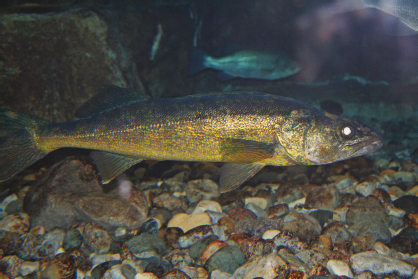
The largest member of the freshwater perch family, walleyes are will-o-the-wisp game fish with bipolar personalities; sometimes they bite and sometimes they dont. And to add to an anglers frustration, walleyes can be here today and gone tomorrow as they follow schools of baitfish across miles of open water on the Great Lakes.
Theres a second reason fishermen pursue walleyes: the fish are excellent table fare. There is no better-tasting fish that swims, freshwater or saltwater. The mild, flaky, succulent white meat of a walleye filet is excellent fried, baked, or broiled, and Ive included a favorite recipe of mine for you to try at the end of this book. In the meantime, well concentrate on how to catch this elusive species, my favorite game fish.
Why Troll for Walleyes?
Trolling is placing a fishing line into the water with a lure or bait attached and allowing the slow, forward progress of a boat to impart movement to the lure or bait, in turn attracting fish. But why attempt to catch walleyes by trolling? Why not jig, rig, cast, or use any number of other techniques? There are many ways to catch walleyes, but on big water, trolling puts more walleyes in the boat per hour of fishing than any other technique, hands down. Statistically, no other fishing strategy even comes close. When there are untold miles of water to cover in search of walleyessuch as on the Great Lakestrolling should be your number one, go-to technique. It just makes sense.
Ive spent years trolling for walleyes, and all the advice offered in this book is hard wonyou can count on it. Ill tell you honestly what works and what doesnt, at least from my experience. But I cant take credit for all the solid information contained in the following pages, not even a large part of it. Through the years, Ive had the privilege of fishing with many fishing guides, charter captains, walleyes pros, and other just plain excellent fishermen who have been more than willing to share their walleye-catching secrets. Many of their special insider tips and techniques are included in this book. Thanks, guys, I owe you a trip.
Now, lets get ready to go fishing.
World of the Walleye: A Thumbnail Life History
The largest of nearly 250 species in the family Percidae (perch and darters) in North America, the walleye is also known as pickerel, yellow pike, walleyed pike, and white salmon, among other local names. This toothy predator prefers the clear to slightly turbid waters of large lakes and rivers, and is typically found over rocky reefs and shoals of gravel, bedrock, and other firm bottoms.

A walleyes eyes are well adapted to feeding in low-light conditions, often resulting in dawn, dusk, or even the total darkness of night being the best times to troll.
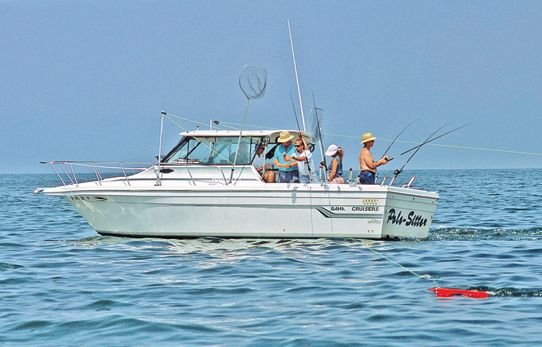
On big water, trolling catches more walleyes per hour than any other fishing technique. These anglers are using a mast system to spread their lures behind and to the sides of their boat.
But in the Great Lakes and large, northern lakes and western reservoirs, walleyes can also be found miles from any significant bottom structure, roaming wide-open expanses of water in search of prey fish. These nomadic schools, sometimes miles long and wide, suspend in the water column below baitfish. As a result, this behavior of roaming open water makes walleyes particularly vulnerable to trolling.
Spring Spawning
A walleyes year begins in the early spring. At ice-out in northern climates, with water temperatures edging near the 40-degree mark, male walleyes move to spawning reefs in lakes or ascend rivers in anticipation of the larger females arriving to breed. Walleyes dont build and guard nests as do bass and some other fish species. Instead, the females deposit their thousands of eggs across the bottom near suitable substrate such as rocks, gravel, and cobble. As they do, males immediately swim alongside the females and eject their white sperm to fertilize the eggs. No parental care is given the eggs nor the fry once the eggs hatch. The young walleye are simply on their own in a very hostile underwater world where few young fish survive to adulthood, possibly only one in a thousand.

